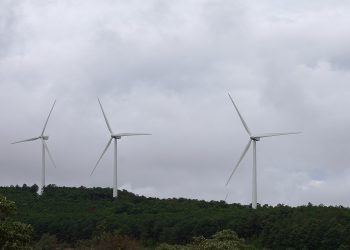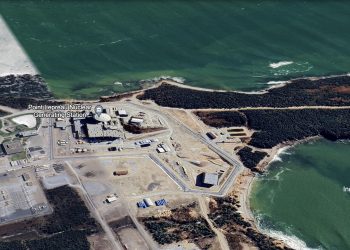The news that small independent sawmills across the Maritimes are being hit with a 19.88 percent tariff on lumber exports to the U.S., while J.D. Irving, Ltd., will get off lightly with a scant 3.02 percent tariff, came as a shock, particularly to Nova Scotia and Newfoundland lumber producers. New Brunswick mills were bracing for the worst, as they had been singled out for the first time by the U.S. Lumber Coalition, but producers in the other Atlantic provinces had not even been named in the Coalition brief that alleged unfair subsidies to the Canadian lumber industry.
In fact, the Coalition had accepted a stumpage survey from Nova Scotia (“Report of Prices of Standing Timber April 1, 2015 – March 31, 2016”) which yielded a saw material price of $30.69/cubic metre, as an in-Canada undistorted private price for spruce, pine and fir timber. So, for Nova Scotia sawmills to pay the tariff is like paying a penalty for a crime that you haven’t even been charged with.
Maritime lumber producers have traditionally been represented on the trade issue by the Maritime Lumber Bureau (MLB), but in an abrupt turn-around in 2015, MLB CEO Diana Blenkhorn, whose able leadership had helped to retain an exclusion for all Maritime sawmills, was released from her duties. Blenkhorn had 38 years of experience and knew her way around Washington corridors of power. The MLB was stripped of its trade responsibilities, and J.D. Irving went out on its own and applied to the US Department of Commerce to be a voluntary respondent, leaving the remaining companies in disarray and without informed and experienced leadership.
Cases involving countervail and dumping allegations usually involve several steps. The first step is a review by the International Trade Commission, which is anything but international, to determine if American business interests had suffered “material injury.”
In its brief to the U.S. Department of Commerce (DOC), the US Coalition for Fair Lumber Imports examined Canadian lumber imports in the ten months leading up to the expiration of the Softwood Lumber Agreement in October 2015 (base period) and compared them with shipments in the ten months following the end of the deal. It found a 29 percent surge of imports in that period. Overall, imports jumped from 28 percent of U.S. lumber sales to to 34 percent. The volume of Canadian lumber entering the U.S. increased from 10.9 billion board feet to 13.2 billion, and the portion of Canadian lumber production exported to the U.S. rose from 44 percent in 2013 to 59 percent in the first ten months of 2016. Under U.S. trade law, this meets the definition of a massive increase in imports, which triggers a trade situation known as “critical circumstances,” which in turn leads to an expedited process.
Furthermore, the Coalition argued, the big jump in Canadian imports flooded the market and depressed prices at a time when the U.S. housing market was starting to recover, thereby causing the U.S. industry harm in the form of lay-offs, business losses, and mill closures (78 between 2013 and August 2016). U.S. housing starts had fallen to a 50-year low of 554,000 in 2009 following the 2008 financial crisis, and have still not fully recovered.
The Commission was not long agreeing with the Coalition that the U.S. lumber industry had suffered “material injury,” thereby setting the stage for a full-scale investigation of the Canadian lumber industry by the DOC. The DOC usually selects a sample of “typical” companies to review in detail, and then from that sample applies an average to all other mills. Through this process, the DOC found subsidization rates for Canadian lumber producers. J.D. Irving will pay 3.02 percent in duties while the other companies will pay more. For example, West Fraser will pay 24.12 percent, Canfor, 20.26 percent, Tolko, 19.5 percent; Resolute, 12.82 percent and all other lumber producers, 19.88 percent.
In its brief to DOC, the Coalition identified three government programs that it claimed provided subsidies to the New Brunswick lumber industry:
Stumpage
The Maritime provinces have traditionally relied on the fact that royalties paid by companies for Crown timber reflected the prices paid for stumpage on private woodlots, which had been accepted by the Americans as a fair and open market. But in 2008, the New Brunswick Auditor-General challenged that assumption, stating that, “The fact that the mills indirectly or directly control so much of the source of timber supply in NB means that the market is not truly an open market.”
The Coalition cited the report in their brief and concluded that public timber is being provided for less than adequate remuneration. The New Brunswick Forest Products Commission had done a woodlot stumpage survey in 2016, the Coalition dismissed the results and concluded that there is “no current NB private timber prices that are useable bench marks in this investigation.”
J.D. Irving would have countered that the market that they operate in, which also includes Nova Scotia and Maine was still an open and competitive market. They would have pointed to the fact that there was very little difference between the rates in Nova Scotia and New Brunswick.
Power
New Brunswick’s Large Industrial Renewable Energy Purchases Program also caught the Americans’ eye. This program, which has been in place since 2012, pays producers of bio-mass power a fixed rate of $95/MW regardless of market price, and then sells power back to the company at a lower rate, thereby incurring a loss for NB Power and providing a subsidy for the power producer. According to testimony at Energy and Utilities Board hearings last year, NB Power suffered a loss of $24.2 million under the four agreements that it has under this program. J.D. Irving’s rebuttal would have pointed out that although this program applies to pulp and paper mills, sawmills are in a different rate class, so they pay much higher rates than large industrial consumers.
Forest management
The third program that came under scrutiny was the system that provides grants for silviculture and forest management services. The Province of New Brunswick pays for planting and thinning on Crown land, to the tune of $24.5 million in 2013, and also pays a fee of $26.5 million annually to the four licensees for provision of forest management services. Once again, the Coalition views these payments, or at least part of them, as subsidies to the industry, and thus subject to countervail duties.
J.D. Irving would undoubtedly argue (with the government’s support) that the payments for silviculture and thinning apply to publicly-owned land, and not to the company’s own land, and therefore they are not grants. With respect to forest management services, J.D. Irving would have supplied the DOC with mountains of paper to support the costs incurred by the company in the management of those provincial Crown lands.
Strong case
The J.D. Irving team filed 9,000 pages of material with the DOC to counter the allegation of subsidies made in the Coalition brief. They were up against a formidable opponent and they did a superb job in arguing their case. No doubt they would also have argued that the high proportion of Crown timber in New Brunswick is offset by much smaller amounts in Nova Scotia and Maine, where the company also has sawmills, and that their operation must be looked at from a regional perspective. In addition, if the company’s private land holdings in all three jurisdictions are included, the proportion of Crown wood is much lower. They would also have emphasized that jobs in their Maine operations, including the new sawmill near Ashland, would be jeopardized by high tariffs. Perhaps they would even have threatened to pull out of Maine altogether.
It’s hard to imagine DOC officials ploughing through 9,000 pages of documents and subjecting them to the careful analysis and fact-checking that would be required to come up with such a precise determination of a 3.02 percent subsidy in the three short months since the Commission determined that the U.S. lumber industry had suffered “material injury” back in January. Be that as it may, it would have made much more sense to apply the 3.02 percent rate to other New Brunswick lumber producers instead of the average Canadian rate of 19.88 percent. To rub salt in the wound, the tariff has been applied retroactively for 90 days, meaning that companies must come up with a payment of 20 percent on their last three months’ sales. Adding further to the uncertainty is the possibility of an additional anti-dumping tariff to be determined on June 23.
Small wonder, then, that a small cedar mill near Fredericton, Hainesville Lumber, with six employees and 100 percent of its wood supply purchased from private woodlots, has decided to sit on the sidelines for the next few months and see what takes place. “I could live with 3 percent, same as Irving,” said owner Danny Stilwell, “but I can’t deal with 20 percent.”
David Palmer is a columnist for Atlantic Forestry Review and the retired manager of the York Sunbury Carleton Forest Products Marketing Board.
This article was first published in Atlantic Forestry Review.






![Mi’kmaq senator pushing for end to ‘second-generation cut-off’ gains traction, but feds signal opposition [video]](https://nbmediacoop.org/wp-content/uploads/2025/11/S2Nov132205-2-120x86.jpg)



